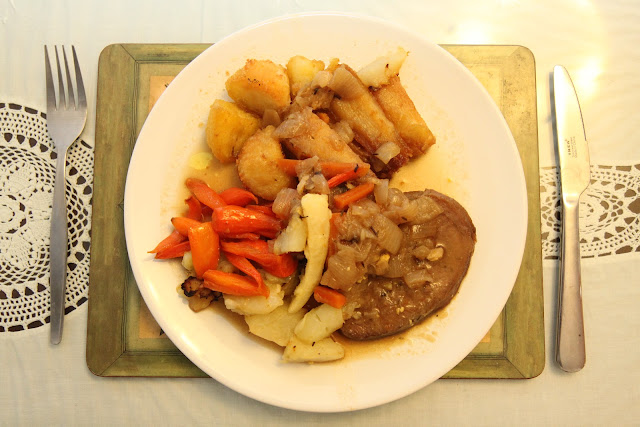Though not usually big on dining out at Italian restaurants, we decided we had to give De Luca a try after it was strongly recommended by some friends. These friends have now dropped a little in our estimation.
De Luca describes itself as a modern Italian restaurant, and it prides itself on "the theatre" whereby an open plan kitchen allows guests to watch the action. This is a great idea. Not only are the chefs unable to get away with unhygienic practice, it also provides welcome entertainment if your date leaves you to use the bathroom etc.
The menu is a short simple affair. The menu had a grand total of six "primi"s (pasta, risotto, salad - the cheaper and more conventional Italian food), and six "secondi"s - and none of them particularly exciting. The specials weren't advertised anywhere we could see and I had to ask to have the specials list reeled off at record speed. Then I had to ask separately for the prices - It apparently shocked the waiter that I might consider the price of the food I was going to be paying for...
For our starter, we ordered Antipasto to share - a mixed platter of cured meats, cheeses, peppers, onions, sun-dried tomatoes, artichokes and olives. The ingredients themselves were a little salty, and nothing special done with the sharing aspect. On the positive side, the olives were very nice and meaty, and the peppers and green leaves offered some respite from the salt fest.
 |
| The Antipasto to share - A little on the salty side |
For mains (after considering the extremely limited menu), I went for the sirloin steak (medium-rare) with green peppercorn sauce. On asking the waiter how peppery it was, and which wine he recommends, he seemed even more confused than when I asked the price of the specials. He seemed to have little knowledge of the food (the minimum I would expect from the waiter) or the house wines. After a short period of uncomfortable umming and ahing, we settled on the
Primtivo del Salento.
To be fair the steak was perfectly cooked and the peppercorn sauce delicious. The chips were great, and the peppery rocket complimented the meal. The wine on its own was excellent, but was a little too weak for the peppery steak.
 |
| The sirloin steak - A highlight |
Natalie opted for a salmon and pea risotto. Risotto in provincial restaurants are unanimously disappointing! And yet the appeal of the perfect risotto - where the texture is firm but yielding, each mouthful uniform in silky smoothness but varied in tastes - is so strong that I find it too tempting time and time again. This risotto suffered from common errors - too stodgy, too meagre on the salmon and on the pea (how stingy do you have to be to be frugal with peas? Peas, for heaven's sake!?). And too salty. Way too salty.
She found it so salty that she had to order more water. Sadly, it didn't come. So, as you do when you don't succeed, we tried, and tried again. On the third request, the water came. Not good enough.
 |
| Salmon and pea risotto - Definitely on the salty side |
By the time it came for dessert, business was picking up. We had to wait so long for our waiter to come that eventually we called the manager over to take our order - Usually a privilege, but it was clear in this case the the restaurant was clearly not prepared for the event that people might actually want to eat there. After ordering a single Tiramasu between us, we had to wait a long time. They'd forgotten about our order.
When it finally came, we found that De Luca's Tiramasu was a slight twist on the traditional. A layer of sponge, followed by a chocolate mouse layer, topped with cream and dusted with chocolate. It was a delicious take, and finished off the meal nicely.
 |
| De Luca's take on a Tiramasu - A highlight (when it finally came!) |
Along comes the bill, to which they've presumed that we were so overjoyed with the service, that we'd like to pay a 12.5% tip. If you pay with card, you don't get the option to change your tip with the machine they give you, so I had to politely explain exactly why I wasn't going to give the full tip. To be fair, the waiter seemed to expect it...
Service: 4
Atmosphere: 8
Food: 7
Price: Starter for two, two mains, one dessert and one glass of wine for £45.
Overall: 6

 The crab was boiled in salted water and allowed to cool completely. All the brown meat and white meat was then meticulously removed. I am very inexperienced in this matter so it took me around 45 minutes. I'd like to say it was worth it in terms of flavour but in hindsight I would probably buy fresh crabmeat from the fishmongers instead.
The crab was boiled in salted water and allowed to cool completely. All the brown meat and white meat was then meticulously removed. I am very inexperienced in this matter so it took me around 45 minutes. I'd like to say it was worth it in terms of flavour but in hindsight I would probably buy fresh crabmeat from the fishmongers instead.
 Serves 2
Serves 2
















